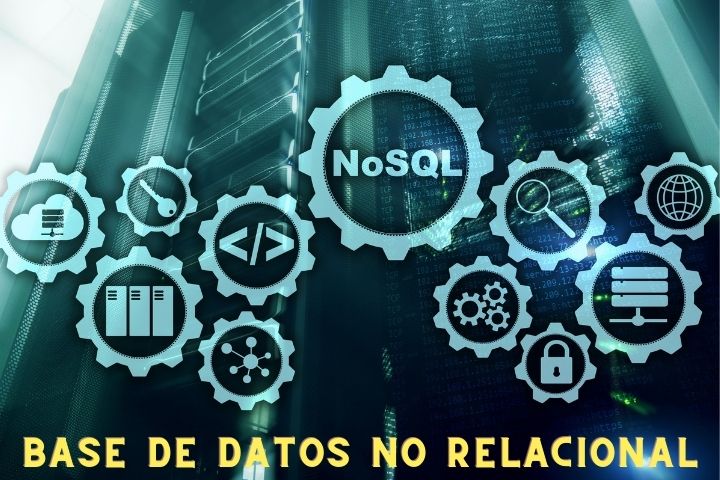Non-relational or NoSQL database

Today we have two major data management systems: relational and non-relational databases . Each of these systems offers certain advantages, so knowing them well is vital to using the most appropriate one in each situation.
In this article we will give an introduction to databases that use the non-relational model. You will learn what they are, what advantages they offer and what the differences are compared to those that use the relational model.
Stay and find out!
What are non-relational databases?
A non-relational or NoSQL database is a data storage and management system that does not use the relational model or the SQL language to perform queries. This offers certain advantages such as flexibility, scalability or optimization of resources.
Non-relational databases do not allow aggregation operations such as JOIN or GROUPBY, but are allowed by SQL managers.
Furthermore, we cannot guarantee that the ACID principles (Atomicity, Consistency, Isolation and Durability) are met.
Although this may seem like a disadvantage, it actually brings many other advantages as it greatly improves processing speed and scalability.
For this reason, NoSQL database systems grew thanks to the need of large companies such as Twitter, Facebook or Google to query data in a fast and scalable way.
NoSQL Database Features
- Database designed to store unstructured data such as images, videos or documents.
- NoSQL databases do not use the SQL language to handle queries. However, on some occasions it can be used as extra functionality.
- Data is typically stored in collections in a key-value format. As we will see later, there are also other types such as document-oriented or graph-oriented databases.
- Designed to support large volumes of information.
- Designed for projects that need great horizontal scalability.
Advantages and disadvantages of the non-relational model
The NoSQL model offers certain advantages and disadvantages. It is important to be aware of them so as not to use this type of DB in projects that are not necessary.
Some of the advantages that NoSQL management systems offer are:
- High scalability
- They offer great flexibility
- Allows storage of unstructured data
- They allow a distributed structure: Apache Cassandra or Apache HBase are examples of distributed database management systems
However, not everything that glitters is gold. There are also certain disadvantages that are important to know:
- They do not comply with the principle of ACID (Atomicity, Consistency, Isolation and Durability) so there may be data coherence problems
- They do not have a standardized language unlike relational databases that have SQL
- The data is not stored in tables nor does it allow the use of aggregation functions
- It does not have a standardized system and the community is smaller than in SQL since they have been on the market for less time
Types of NoSQL databases
There are different types of non-relational databases. Below we show you a description of the most used in the technology sector.
Document-oriented
Object-oriented databases use records found within text, JSON, or XML documents to store information. A very famous document database is MongoDB.
They allow storing semi-structured or unstructured information, which can be manipulated through the basic CRUD functions (Create, Read, Update and Delete).
Key-Value
The key-value database mode It allows us to associate a unique key with each value that we want to store, which allows us to access it. It is a type of NoSQL database widely used in many projects. One of the best-known databases that use the key-value system is Redis.
Graph Oriented
Graphs are mathematical objects made up of nodes and edges. Graph mathematics allows us to study relationships between nodes.
The graph-oriented non-relational databases They allow you to use these mathematical tools to establish relationships between data that are not allowed in relational databases.
Modeling information as degrees allows, for example, establishing connections, paths, influencing factors, and other properties that help perform much deeper analysis than conventional NoSQL and SQL databases.
Differences between SQL and NoSQL
One of the main characteristics of relational databases is that information is stored in the form of tables. Additionally, relationships can be established between tables within the same database using what is known as a primary key and a foreign key.
This does not happen in non-relational databases. In these, the information is stored in collections and its structure is usually simpler, improving the flexibility and performance of data management.
Non-relational databases do not use the SQL language to perform queries. Standardization of the use of NoSQL databases is still needed, as which are quite new compared to how long SQLs have been around.
Another notable difference is that relational databases focus on structured data. However, databases that use the non-relational model are focused on semi-structured and unstructured data.
When to use non-relational databases
Non-relational databases are designed for projects that require great data scalability because they can support large volumes of data.
They are also ideal for storing unstructured or semi-structured data.
It is important to remember that this non-relational model does not comply with the ACID principles, so it is important that the coherence and consistency of the information is not a fundamental pillar of the project.

